Traditional Facelift
- Home
- Traditional Facelift
Traditional Facelift:
When to consider a facelift?
A facelift is a surgical procedure that can address various signs of aging in the face and neck.
While each individual’s needs and goals may differ, there are some common factors to consider when thinking about a facelift:
Visible signs of aging
If you are experiencing noticeable signs of aging in your face and neck, such as sagging skin, deep creases, or jowls.
Loss of Skin Elasticity
A traditional facelift can be beneficial if your skin has lost its elasticity and begun to sag excessively.
Desire for Long-Lasting Results
If you are looking for a more permanent solution to address signs of aging compared to non-surgical treatments.
Good Overall Health:
It's important to be in good health to undergo any surgical procedure.
Realistic Expectations
Understanding what a facelift can and cannot do is crucial. It's ideal for improving the lower face and neck but doesn't typically address issues like fine lines or upper facial aging.

Ultimately, the decision to undergo a facelift is a personal one. During your consultation with Dr. Brandt he assess your unique situation, discuss your options, and guide you towards the most suitable treatment plan to achieve your desired results.
What is a Traditional Facelift?
A traditional facelift, also known as a standard facelift or rhytidectomy, is a surgical procedure that addresses signs of aging in the face and neck. It primarily focuses on the upper layers of the face, unlike the deep-plane facelift which targets deeper tissues.
In a traditional facelift, the surgeon typically tightens and repositions the skin and superficial muscles to reduce sagging and smooth out wrinkles. The procedure is effective for treating issues like jowls, sagging cheeks, and deep wrinkles, particularly in the lower face and neck area.
The traditional facelift offers significant rejuvenation, aiming to restore a more youthful and refreshed appearance. However, the results may not be as extensive or long-lasting as those achieved with a deep-plane facelift. This technique is often suitable for individuals who show moderate signs of facial aging and are seeking noticeable improvement.
It is critical to recognize that a traditional facelift is the industry standard and most common type of facelift performed worldwide.
Who is a Good Candidate for a Traditional Facelift?
Determining if you’re a good candidate for a traditional facelift can begin with a simple self-assessment. Follow these steps in front of a mirror:
- Hand Placement: Place your hands along the sides of your jaw, with your index fingers pointing upward and your thumbs under your jawline.
- Gentle Lift: Gently lift the skin upwards, applying vertical pressure against gravity.
- Observe Results: Look for changes and improvements in your facial appearance.
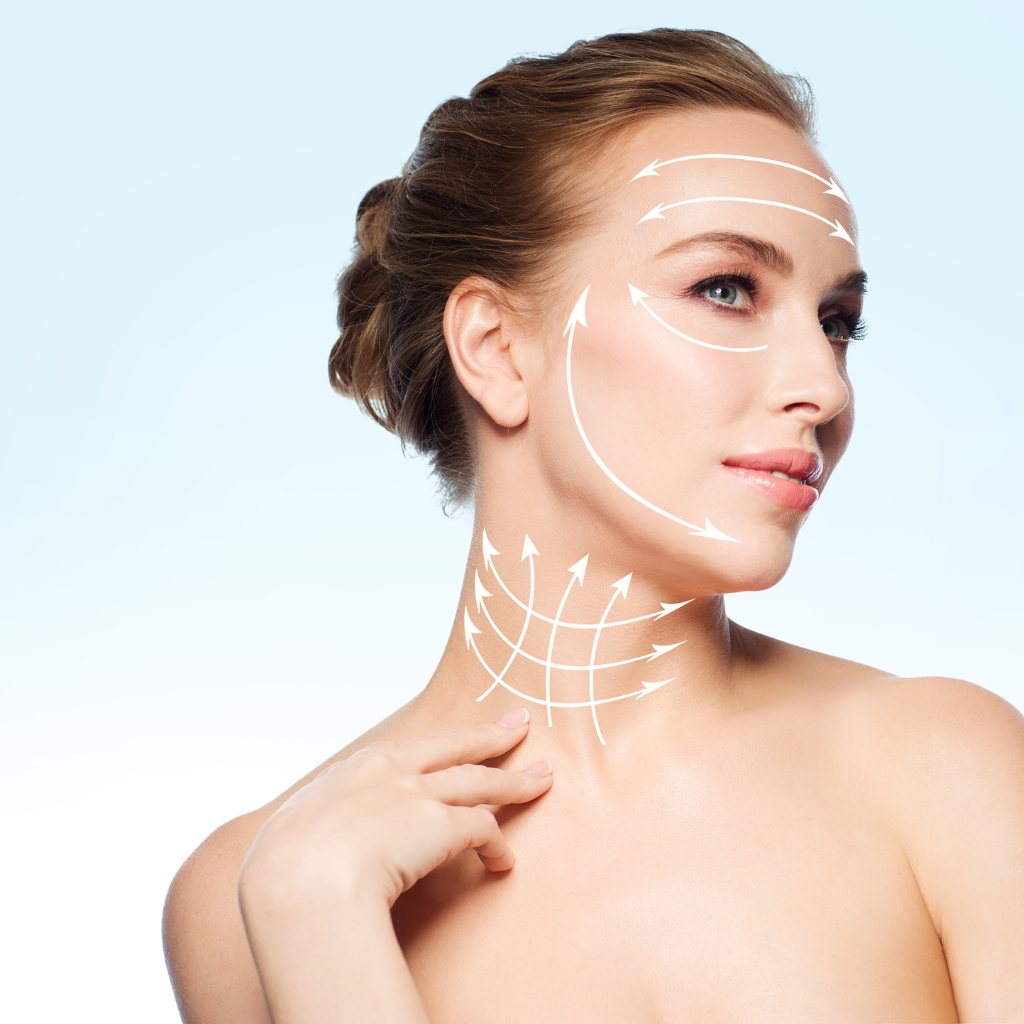
If you notice a significant improvement in your facial contours and a reduction in sagging and wrinkles, a traditional facelift might be right for you. However, remember that this self-assessment is just a preliminary step. A professional consultation is crucial to thoroughly assess your facial structure, discuss your aesthetic goals, and determine the most appropriate treatment plan.
What are other facelift options?
In addition to a traditional facelift, there are other facelift options available to address signs of aging in the face and neck. These alternatives include:
Deep-plane Facelift:
A deep-plane facelift, is an excellent surgical procedure that targets the mid-to-lower face and neck. It typically involves entering the midface to adequately tighten and reposition the deeper tissues of the face. This allows results that lift the midface, nasolabial folds, while also addressing the jowls and neck. This is an excellent option for someone who a traditional facelift may not achieve their desired goals.
Mini Facelift:
A mini facelift, also called a limited-incision facelift, this is a less invasive option that focuses on improving the lower face and neck. A mini facelift tends to lift and reposition tissue without the need for removing excess skin. As a result, this procedure involves shorter incisions and only addresses mild to moderate signs of aging, providing a more subtle rejuvenation.
Neck Lift:
A neck lift is specifically designed to address sagging and excess skin in the neck area and is almost always a part of a standard or deep-plane facelift. On its own, this procedure can be used to restore neck contours and is frequently combined with neck liposuction to sculpt and create more jawline and neck definition.
Ultherapy:
Ultherapy is an Ultrasound based minimally invasive procedure that tightens the deep layers of the face and neck called the SMAS and the platysma muscle. This procedure is ideally suited for early jowls and individuals who want to “stay ahead” of the aging process. There is minimal downtime and recovery after Ultherapy treatment.
Morpheus8 / Radiofrequency treatments:
Radiofrequency treatments use needle stamps or an insertable probe to head up the skin. During the treatment, a device delivers controlled heat energy to the deeper layers of the skin. This heat stimulates collagen production, which helps tighten the skin, reduce wrinkles, and improve skin texture. This procedure does not address the deeper tissues of the SMAS and platysma, and it achieves the best results in individuals with mildly loose skin.
Liquid facelift:
A liquid facelift is a non-surgical cosmetic procedure that uses injectable dermal fillers and neuromodulators to rejuvenate the face. Dermal fillers restore lost volume and enhance contours, while neuromodulators relax facial muscles to reduce wrinkles. The treatment is performed in-office without incisions or anesthesia. Benefits include restored volume, wrinkle reduction, and improved facial contours. Results are immediate but temporary, lasting several months to a year.
What does a facelift address?
A facelift addresses concerns like sagging skin, deeper facial creases, and jowls. During the surgery, Dr. Brandt tightens the foundation SMAS layer of the face to create a more youthful appearance. By lifting the sagging tissues of the face and tightening the SMAS layer, the procedure helps improve facial contours and reduce the signs of aging. A traditional facelift or SMAS facelift is the most common facelift technique worldwide and provides excellent long-lasting results.
What does a traditional facelift not address?
While a facelift can address various signs of aging in the face and neck, it’s important to understand that it has limitations. Here are some aspects that a standard facelift does not specifically address:
- Skin Quality: It improves contours and tightens tissues but doesn't directly enhance skin texture, tone, or resolve issues like discoloration or sun damage. Treatments such as laser resurfacing or chemical peels might be necessary for these concerns.
- Eyelid/Brow Sagging: Focused on the lower face and neck, a traditional facelift doesn't target sagging eyelids or drooping brows. These areas might require separate procedures, like blepharoplasty or a brow lift.
- Fine Lines and Superficial Wrinkles: Although it can smooth deeper wrinkles, a traditional facelift may not significantly affect fine lines or superficial wrinkles. Non-surgical options like injectables or skin resurfacing might be better suited for these issues.
- Midface descent and heavy nasolabial folds: A facelift can improve these areas but only a deep-plane technique can truly reposition the midface tissues and flatten nasolabial folds. This is why a consultation is Dr. Brandt is critical to deciding on your individual needs and the best surgical approach to achieve your goals.
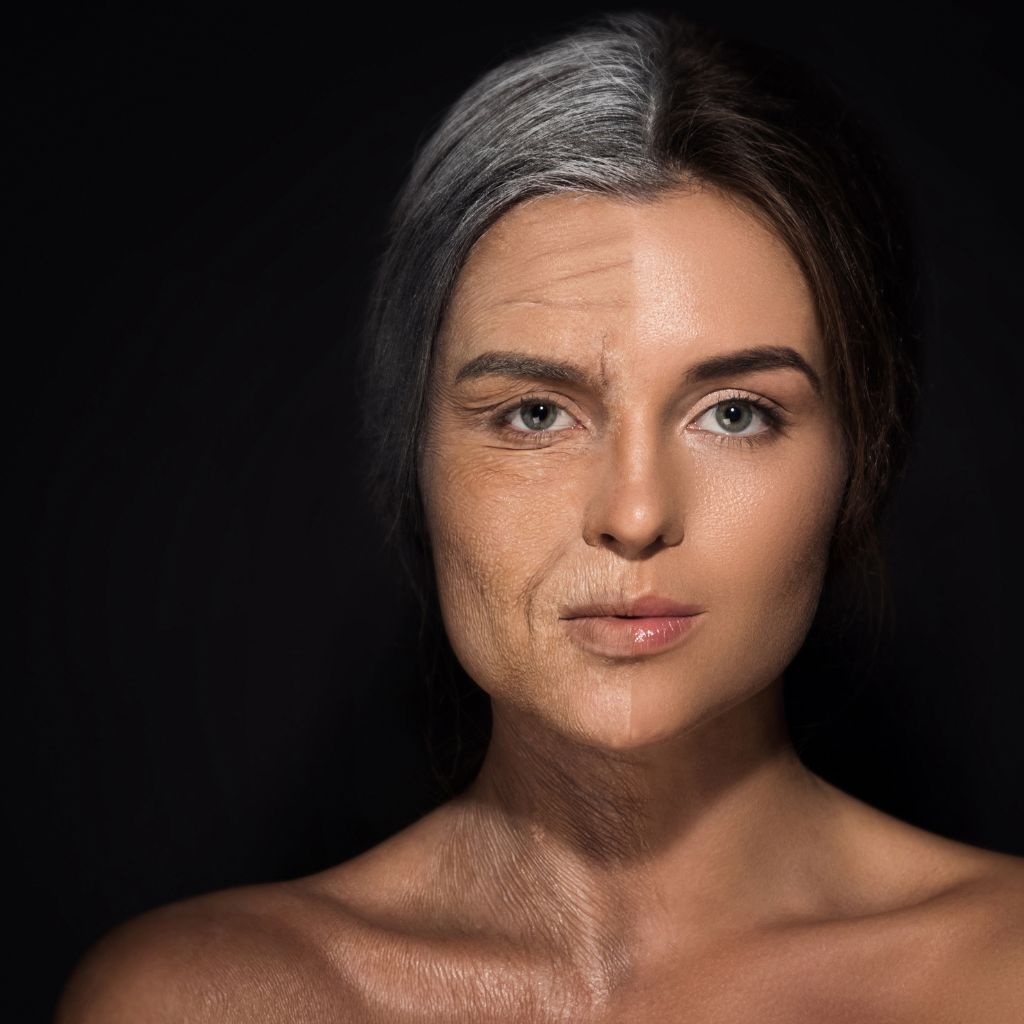
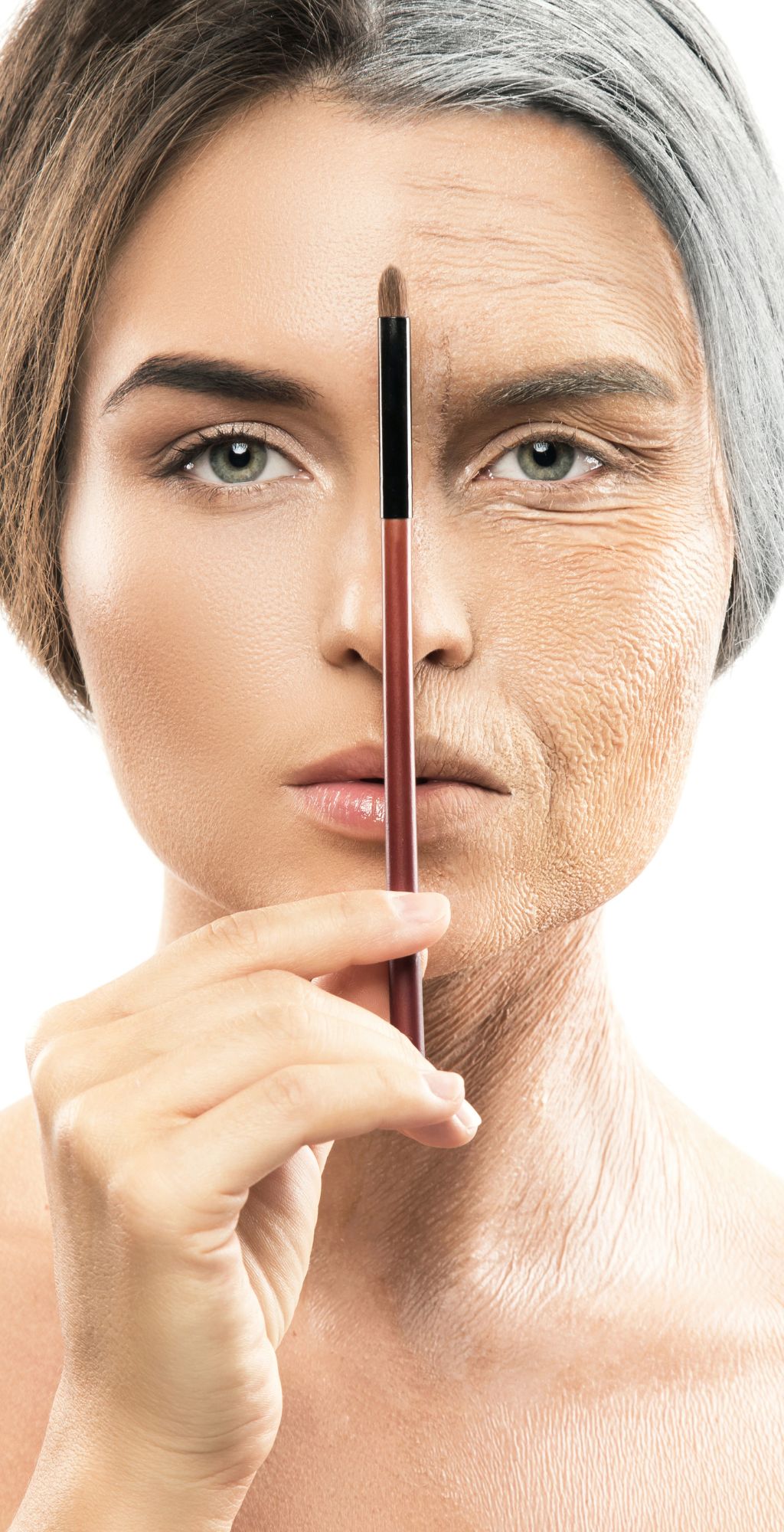
What to expect during recovery from a traditional facelift?
The recovery process after a traditional facelift typically involves:
- Initial Downtime: Patients often need a couple of weeks of downtime. During the first few days, rest is crucial.
- Swelling and Bruising: Common in the initial period, these gradually diminish over a few weeks.
- Pain Management: Pain and discomfort are usually manageable with prescribed medications.
- Bandages and Dressings: Applied to support healing; these may be removed as advised by the surgeon.
- Activity Restrictions: Strenuous activities should be avoided for several weeks.
- Follow-Up Visits: Essential for monitoring healing and removing sutures.
- Visible Results: Improvement is noticeable once swelling subsides, but final results may take a few months as the face settles into its new contour.
FACELIFT BEFORE & AFTER
Take a look at some of the results from our previous patients
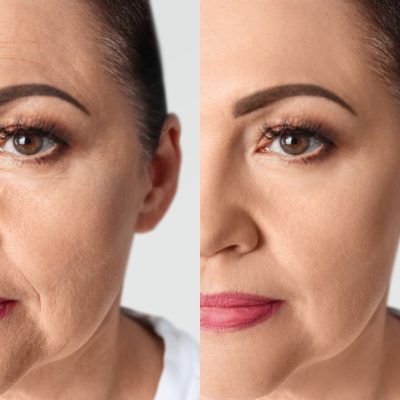
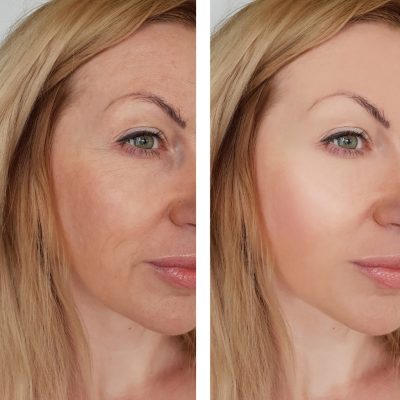
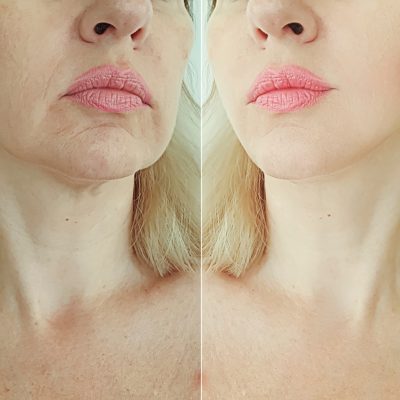

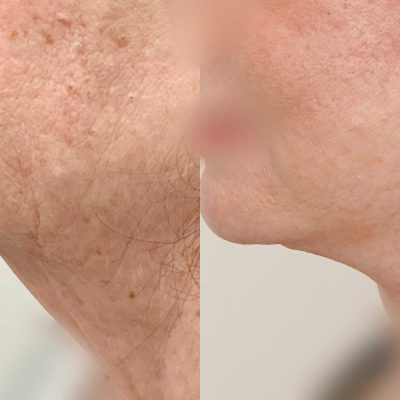
What are the risks of a facelift?
Like any surgical procedure, a facelift carries certain risks and potential complications. It is crucial to have a clear understanding of these risks before making the decision to undergo a facelift procedure. Dr. Brandt will provide you with comprehensive information and address any concerns you may have. Here are some risks to consider:
Infection:
Although rare, there's a risk of infection, which can be managed with proper care and antibiotics.
Bleeding:
Some bleeding is normal, but excessive bleeding may require medical attention.
Scarring:
Incisions may lead to scars, although they are typically placed in less visible areas.
Nerve Injury:
There's a small risk of nerve damage, potentially affecting facial muscles.
Anesthesia Risks:
Complications can arise from anesthesia, though these are rare.
Asymmetry:
There might be unevenness in the face, which can usually be corrected.
Why choose Dr. Brandt for your traditional facelift?
Choosing Dr. Brandt for a traditional facelift offers several advantages due to his extensive qualifications and experience. He is a Royal College certified Head & Neck Surgeon with specialized training in facial cosmetic surgery. His expertise is recognized by the American Board of Facial Plastic & Reconstructive Surgery and several international academies. Dr. Brandt’s education includes rigorous training in head and neck surgery and a fellowship in facial plastic surgery. He stays at the forefront of the field by learning from top surgeons worldwide and continuously refining his techniques. Additionally, his expertise in reconstructive facial surgery, particularly after skin cancer removal, adds to his comprehensive understanding of facial aesthetics and surgery.
